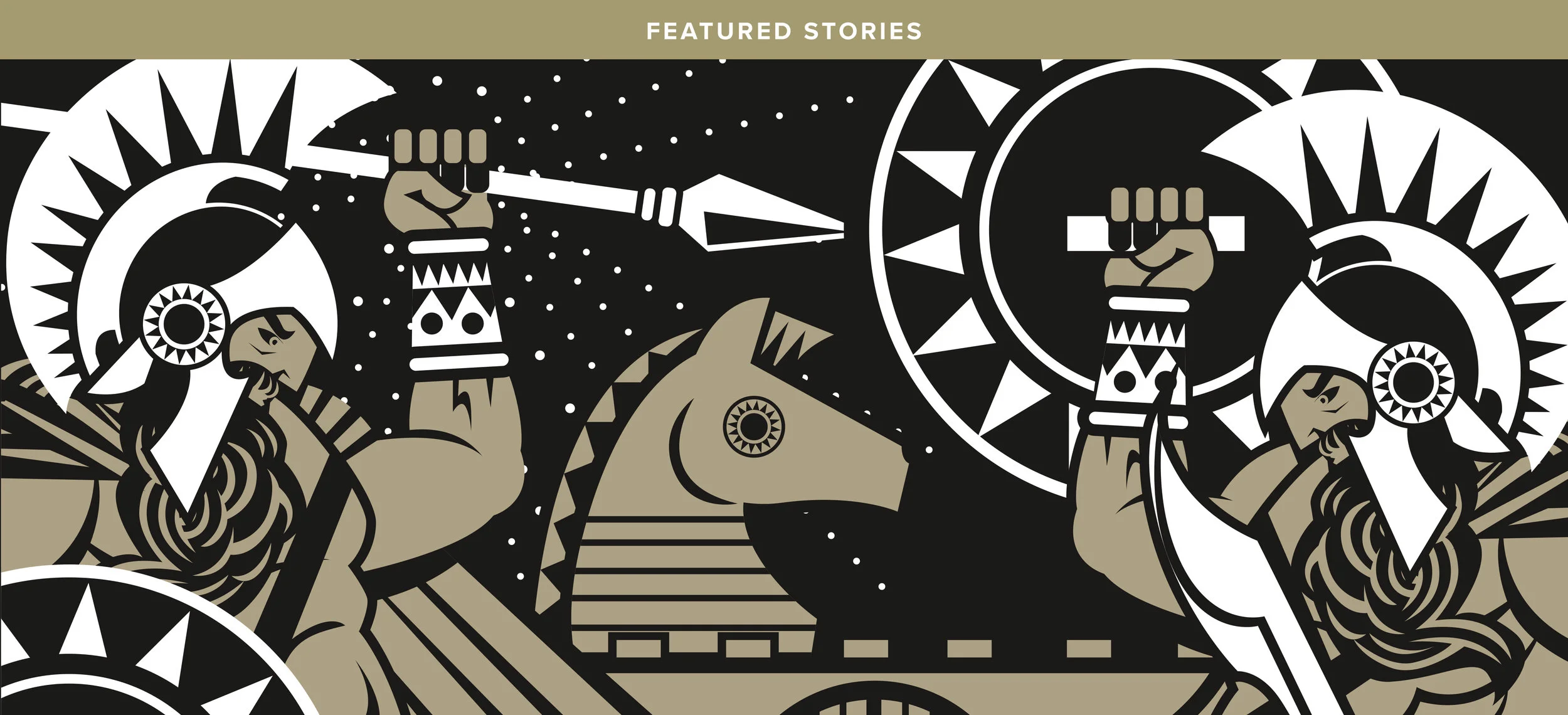The Saintly Outlaw
Attend and listen, gentlemen, who are of freeborn blood, I shall tell you about a good yeoman, whose name was Robin Hood. While he was alive, he was a proud outlaw, and no outlaw was found who was as courteous.
- From “A Gest of Robyn Hode”,
Translated by Knight and Ohlgren,
Robin Hood and Other Outlaw Tales, pp. 80-168
Most everyone knows the legend – or variety of legends – surrounding a man called Robin Hood. We have repeated the catchphrase “he robbed from the rich to give to the poor.” We have seen the movies, from the classic 1938 swashbuckler featuring Errol Flynn, to the 1973 animated Disney film, to the mullet-wearing Kevin Costner rendition in 1991, or Russell Crowe’s unwashed turn in 2010, or even the recent hip version with Taron Egerton. The movies, like the original tales, fashioned Robin Hood as a particular kind of character to suit its times. He may be a rebel, hero, anti-hero, or even something of a tortured vigilante (like Batman’s “Dark Knight”).
Scholars trace the earliest stories back to the 13thcentury, with suggestions of songs being performed about him by revellers during May Day celebrations. Written fragments of ballads appeared in the 15thcentury and became the basis for many stories that followed. That Robin Hood was more comedic and appeared as an amiable and mischievous disrupter of the nobility’s greed. There is a debate whether his stories entertained the peasant classes of their times, or those servants of the gentry in the North of England, or perhaps even a new class of citizenry (a kind of “freelance” working class) that appeared in the 14thcentury. The commonality is straightforward: stories of Robin Hood as a one of the “people” delighted listeners much as the tales of highway robbers in the 18thcentury and the American bootleggers of the early 20thcentury delighted their audiences. They were goodbad boys.
Some scholars have found evidence of a Robin Hood (with variations of the name) dating to the early 13thcentury. He is mentioned in the jail records in Nottingham, for example. One theory suggests that Robin Hood was like William Goldman’s “Dread Pirate Robert” (The Princess Bride), more of a title than an actual name, with many men using it over a long period of history.
If you know Robin Hood only from the movies of the past 50 years, then you’ll be surprised to know that the Robin Hood of the original legends was a faithful Catholic. I discovered this bit of news in Henry Gilbert’s 1912 novel for children called Robin Hood & His Merry Men of the Greenwood.At the time a Protestant, I couldn’t imagine why Gilbert had gone to the trouble to highlight such a thing. I assumed he was proselytizing. But research informed me that Gilbert was being true to history: the earliest stories of Robin Hood presented him as a faithful son of the Church and truly devoted to Mary, the Mother of Christ.
This Robin Hood presented a paradox to me. How could he be a faithful son of the Church and a highwayman at the same time? Worse, how was it that he robbed Bishops and Abbots as part of his thievery? As many writers know, a paradox can become fodder for a good story.
In researching the times in which Robin Hood may have lived or, at the very least, the settings in which his stories were placed, I could see a character who was forced to live out the question “how do you fight for justice when the laws themselves are unjust”? For me, this must be the heart of any dramatization about Robin Hood. He had to be a man of action, but he must also struggle with the line between justice and hatred, righteousness and revenge – otherwise he was no “saintly outlaw” and his stories would not be worth re-telling.
In 2018, I had the opportunity at the Augustine Institute to continue our line of audio dramas with The Legends of Robin Hood.Using Gilbert’s 1912 novel as a foundation, I was determined to make the story familiar (certain conflicts and escapades hadto be told), while making it unfamiliar by bringing faith and history to the forefront.
I also maintained the paradox, hoping that listeners would ask for themselves, as Robin does: “how do you fight for justice when the laws themselves are unjust?”
It is a timeless question that remains a question for our time.
#####
The Augustine Institute’s production of The Legends of Robin Hood – a 12 part drama featuring over 60 British actors, cinema-style sound and music – was released in May, 2019. Look for it on FORMED, as downloads or on compact disc.







